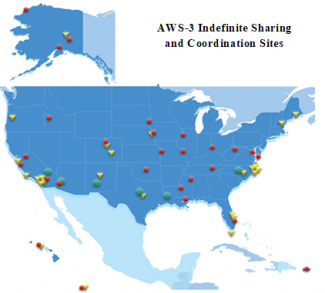ITS, Air Force Conduct Flight Tests as Part of Mid-Band Sharing Experiment
As consumer, industry, and government demand for 5G services and applications heats up, NTIA’s Institute for Telecommunication Sciences (ITS) is focused on finding ways to make the most efficient use of scarce spectrum resources. Many commercial providers have their eyes on so-called mid-band spectrum because it offers them the best combination of coverage, speed, and latency. However, many U.S. government departments and agencies, including the Department of Defense (DoD), operate radar and communications platforms important to the nation’s national security and defense in those bands. A few week ago, the skies over Colorado played host to ITS experiments that will contribute to developing solutions to enable dynamic spectrum sharing between commercial and government users.
Over the course of two hours, a U.S. Air Force high-power radar plane, operating in the 3 GHz spectrum band, repeatedly flew past the Table Mountain Radio Quiet Zone Advanced Communications Test site near Boulder. On the ground, ITS researchers collected data that will begin to shed light on how 5G cellular services might dynamically share spectrum with DoD radar systems. The high-power radar platform provides long range air surveillance; understanding how these system might interact with thousands of terrestrial 5G receivers and transmitters on the ground is essential to the long term viability of 5G networks. While the flight crew operated the radar system in a variety of modes, ITS engineers measured the radar signals reaching the ground.


